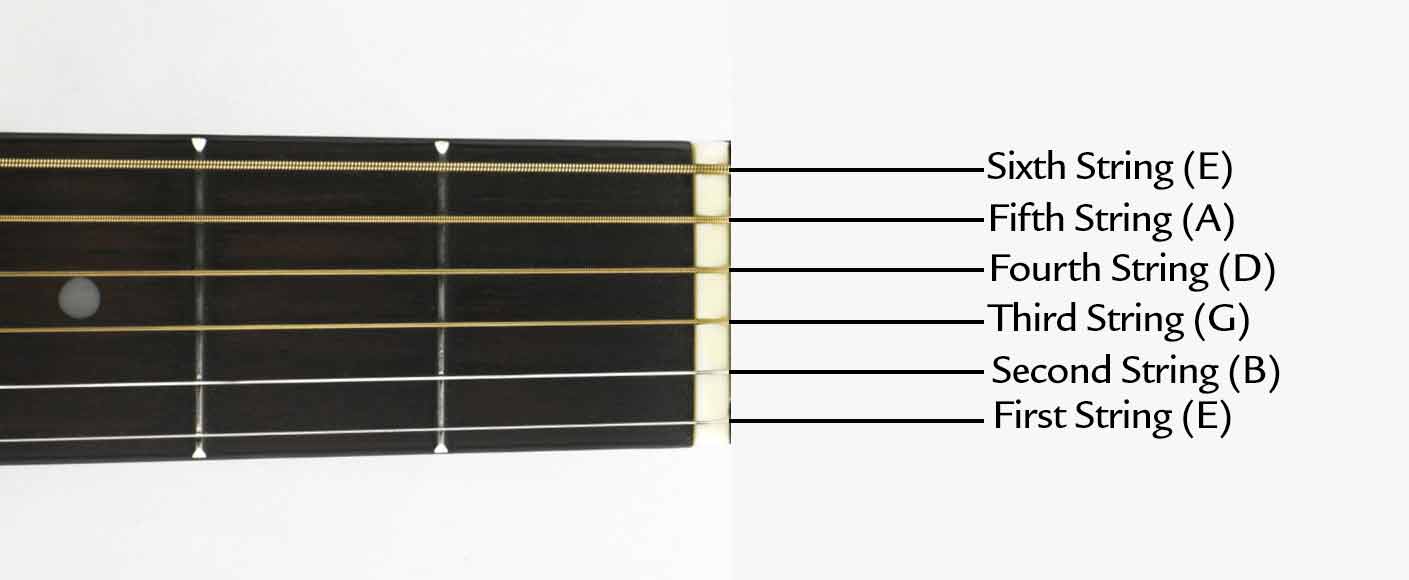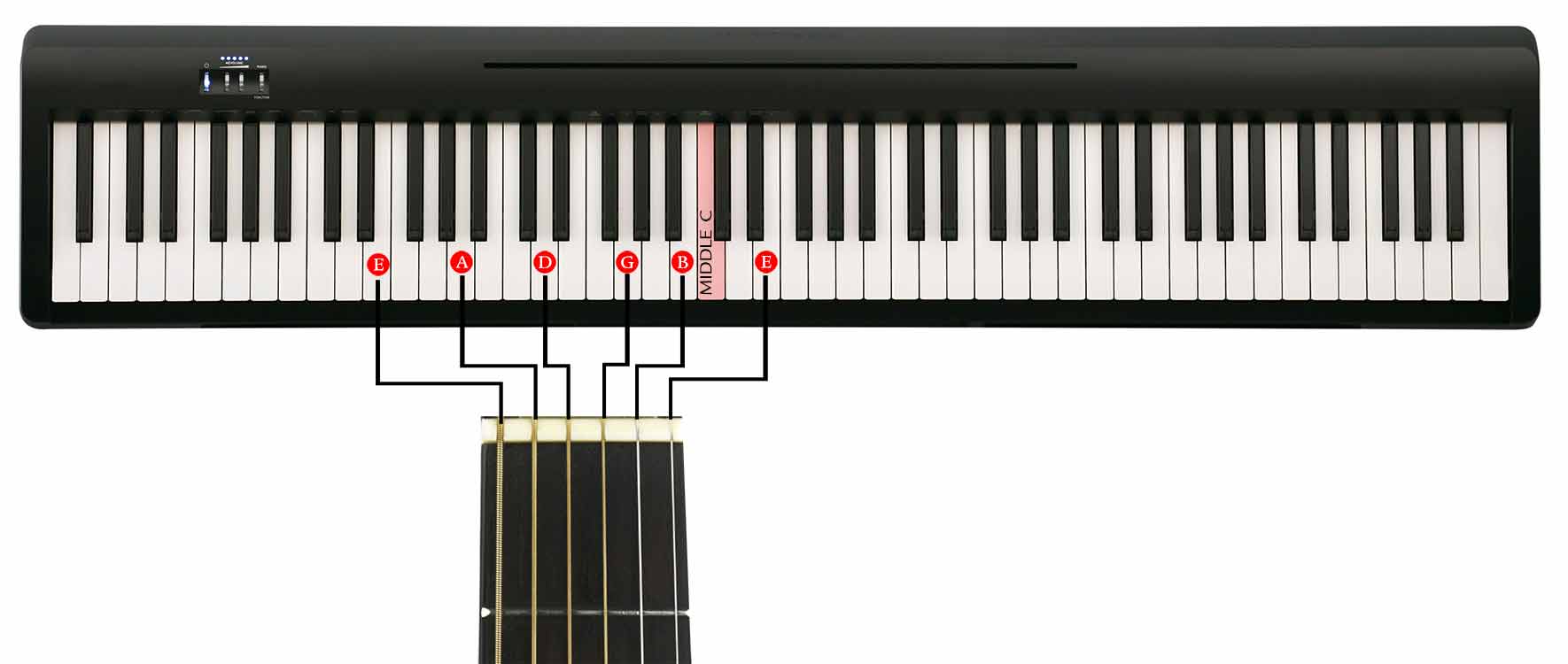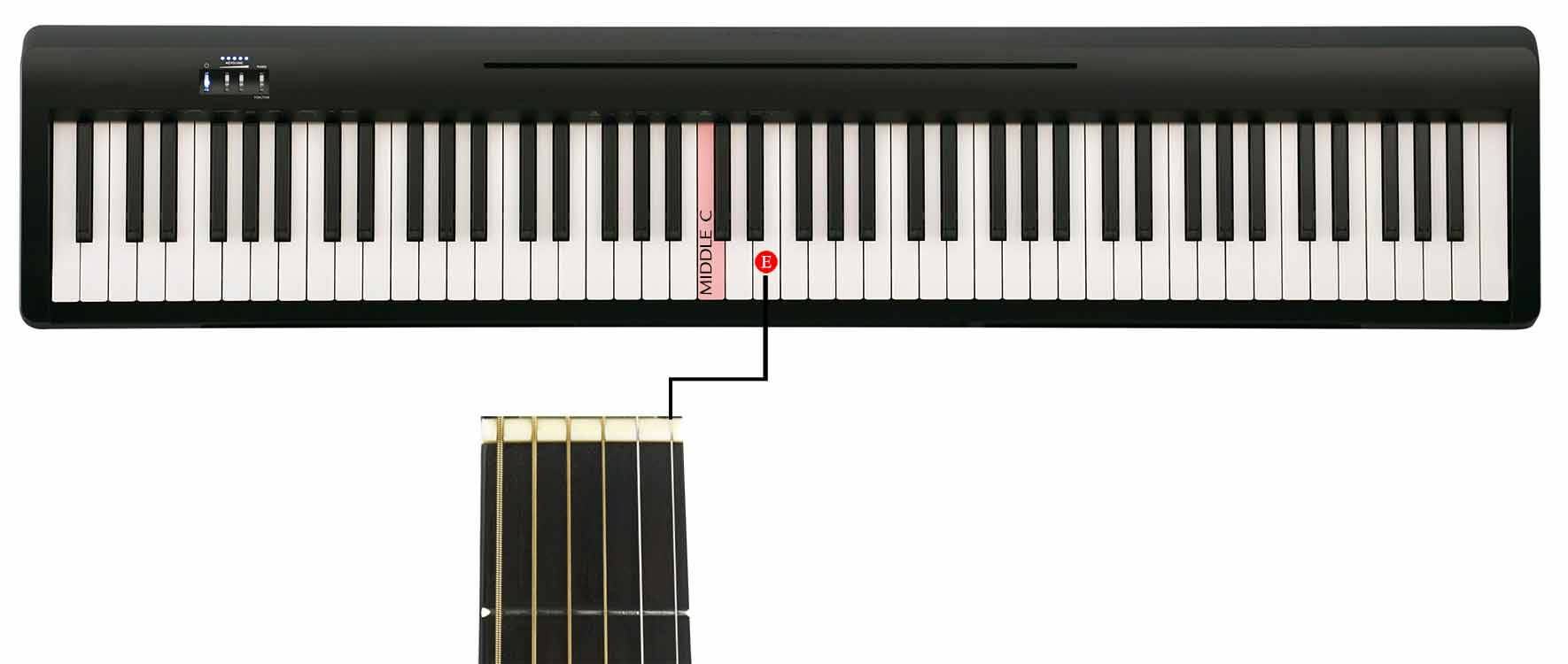METHOD ONE:
This tuning method is the easiest and you require a keyboard, a pitch pipe or a piano for you aid. Let us discuss this method with a keyboard.
1) Find out the Middle C note of your keyboard. For example, if your keyboard has 7 Octaves, the C note on the 4th Octave is the Middle C (Shaded in light pink in the below illustration)
2) Press the E note (the white key 2 places higher after your Middle C) and tune your guitar’s 1st string to match this note (Check the above illustration)
3) Press the B note (the white key immediately to the left of your Middle C) and tune your guitar’s 2nd string to match this note (Check the above illustration)
4) Press the G note (the white key 3 places behind your Middle C) and tune your guitar’s 3rd string to match this note (Check the above illustration)
5) Press the D note (the white key 6 places behind your Middle C) and tune your guitar’s 4th string to match this note (Check the above illustration)
6) Press the A note (the white key 9 places behind your Middle C) and tune your guitar’s 5th string to match this note (Check the above illustration)
7) Press the E note (the white key 12 places behind your Middle C) and tune your guitar’s 6th string to match this note (Check the above illustration)
8) Repeat from the step 1 to recheck the tuning.
9) Congratulations! Your guitar is ready for some great music.
METHOD TWO:
Method number 2 borrows some steps from the 1st method, but then continue with tuning the guitar by self-reference. As in the first method, you will need a pitch pipe, a piano or a keyboard for your aid. Let us discuss this method with a keyboard.
1) Find out the Middle C note of your keyboard. For example, if your keyboard has 7 Octaves, the C note on the 4th Octave is the Middle C (Shaded in light pink in the below illustration).
2) Press the E note (the white key 2 places higher after your Middle C) and tune your guitar’s 1st string to match this note (Refer the below illustration).
3) Place your finger now at the 5th Fret on the 2nd string. Tune this note to match the open 1st String. After they are perfectly matched, your 2nd string is tuned (Refer the below illustration).
4) Place your finger at the 4th Fret on the 3rd string. Tune this note to match the open 2nd String. After they are perfectly matched, your 3rd string is tuned (Refer the below illustration).
5) Place your finger at the 5th Fret on the 4th string. Tune this note to match the open 3rd String. After they are perfectly matched, your 4th string is tuned (Refer the below illustration).
6) Place your finger at the 5th Fret on the 5th string. Tune this note to match the open 4th String. After they are perfectly matched, your 5th string is tuned (Refer the below illustration).
7) Place your finger at the 5th Fret on the 6th string. Tune this note to match the open 5th String. After they are perfectly matched, your 6th string is tuned (Refer the below illustration).
8) Repeat from the step 1 to recheck the tuning.
9) Congratulations! Your guitar is ready for some action.
Other than these 2 easy methods, there are still more complex and advanced methods to tune your guitar like the ‘Harmonics Method’. But such steps require you to have some experience with your instrument.
If you feel that the above methods are too difficult in the beginning, there are many easy-to-use tuners available at your neighborhood music instruments shop and will not cost you much.
Also, If required, our expert sales team at Musicians Corner can help you to tune your guitar.










